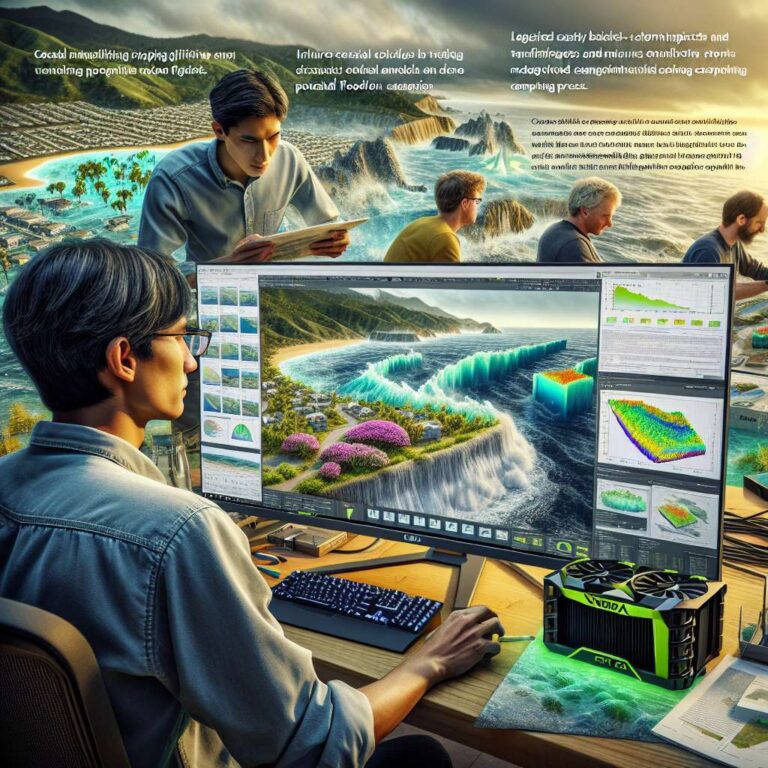Coastal communities in the U.S. face a 26 percent chance of flooding within a 30-year period, a risk expected to rise with climate-driven sea-level change. At UC Santa Cruz’s Center for Coastal Climate Resilience, professor Michael Beck leads efforts to model and map how coral reefs and mangroves reduce flood risk, delivering GPU-accelerated visualizations that help government agencies, nonprofits and financial institutions assess hazards and the benefits of nature-based solutions. Beck argues that clear, high-fidelity visuals are essential to motivate action on complex, costly problems and to validate that proposed protections will work.
The team’s workflow combines the SFINCS simulation tool with Unreal Engine 5 to produce data-driven videos of potential flooding scenarios. Acceleration comes from NVIDIA CUDA-X software, including the cuPyNumeric library and the nvfortran compiler, running on NVIDIA RTX GPUs awarded through the NVIDIA Academic Grant Program. Moving from CPU to a single NVIDIA RTX 6000 Ada Generation GPU cut run times from roughly six hours to about 40 minutes, and a four-GPU cluster enables four simultaneous simulations. According to senior coastal modeler David Gutiérrez, the 3 to 4 times speedup on many workloads enables sensitivity analyses up front, reducing the risk of bad assumptions and improving model robustness. The efficiency gains have also allowed the group to expand the scope of their work.
With faster pipelines, the team is mapping flood risk for small-island developing states worldwide ahead of the COP30 climate conference, aiming to test not just weather-driven impacts but solution scenarios. The research underpins emerging reef insurance models, such as a parametric policy for a section of the Mesoamerican Barrier Reef in Mexico, south of Cancun, developed with The Nature Conservancy and presented to hotel owners, the Mexican government and the World Bank Group. That policy pays out when winds exceed 100 knots, funding rapid reef restoration and debris removal to maintain a natural protective barrier. Similar approaches are spreading across the Caribbean and Hawaii, aligning conservation with risk reduction for coastal communities.
In California, the group is advancing CoSMoS ADAPT to strengthen the USGS Coastal Storm Modeling System, described as the first toolkit to quantitatively evaluate the cost-effectiveness of the state’s coastal adaptation options, including nature-based strategies. Beck says adding solution modeling at multiple protection levels will require continued acceleration and heavy computation. Separately, the NVIDIA Academic Grant Program is soliciting proposals through Wednesday, Dec. 31, focused on generative Artificial Intelligence and model development, generative Artificial Intelligence alignment and inference, and robotics and edge Artificial Intelligence, with eligibility for full-time faculty at accredited institutions.

